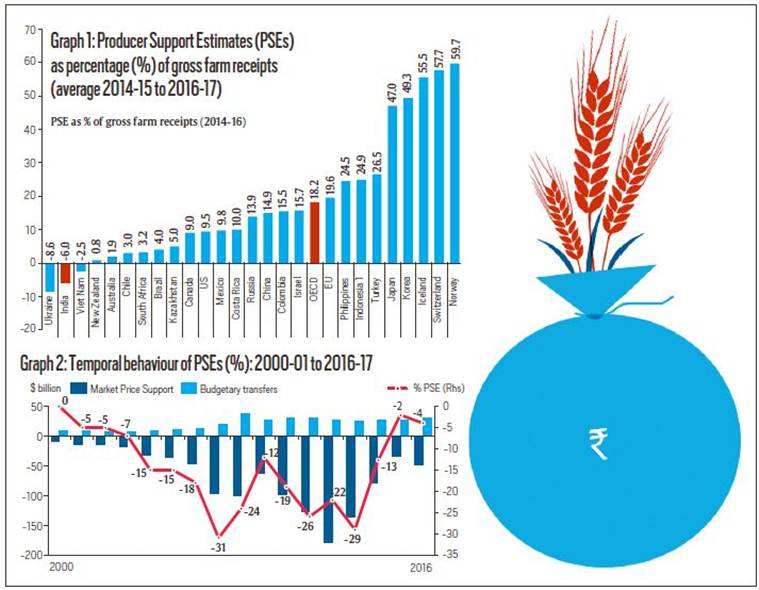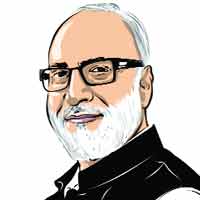Resolving the farmer-consumer binary
Reforms to domestic market regulations and direct benefit transfers for vulnerable sections of the population could be the win-win solution.

India also needs to review its restrictive export policies for agri-products which have inflicted large negative price support to farmers during the period studied. (Representational)
Given the overarching food security concern of 1.32 billion people in India, the country’s policymakers have a challenging task. On the one hand they need to incentivise farmers to produce more and raise their productivity in a sustainable manner, and on the other, they need to ensure that consumers have access to food at affordable prices, especially those belong to the vulnerable sections. In order to find a fine balance between these twin objectives, India has followed myriad policies that impact both producers and consumers. These policy instruments range from domestic marketing regulations (for example the APMC Act, Essential Commodities Act, ECA), budgetary policies (such as input subsidies), trade policies (such as Minimum Export Prices, MEP or outright export bans and tariff duties) to food subsidies for consumers through the public distribution system. These policies work in complex ways and their impact on producers and consumers are sometimes at variance with the initial policy objectives. So, it is only desirable that policy-making is based on more informed and evidence-based research. What has been the outcome of Indian policies in the agri-food space, since 2000-01?
In order to respond to this question, the OECD and ICRIER jointly undertook research over two years to map and measure the nature of agricultural policies in India and the ways they have impacted producers and consumers. The final report was released on July 5 in Delhi and is available on http://oe.cd/ag-india. The report includes key policy indicators like Producer Support Estimates (PSEs) and Consumer Support Estimates (CSEs). The methodology adopted is the standard one that the OECD has applied to measure PSEs and CSEs for 51 countries over the last 30 years. In the case of PSEs, it basically captures the impact of various policies on two components: One, the output prices that producers receive, benchmarked against global prices of comparable products; and two, the various input subsidies that farmers receive through budgetary allocations by the Centre and states. The two are combined to see if farmers receive positive support (PSE) or negative as a percentage of gross farm receipts. A positive PSE (in percentage) means that policies have helped producers receive higher revenues than would have been the case otherwise, and negative PSE (in percentage) implies lower revenues for farmers (an implicit tax of sorts) due to the set of policies adopted. The report estimates these PSEs and CSEs over the 17 year period (2000-01 to 2016-17), building commodity by commodity, for all the major states growing that commodity. It covers about two-thirds of India’s agricultural output.

The results of the PSE exercise reveal that India’s PSE, on average, during 2014-15 to 2016-17 was minus 6 per cent of farm receipts. India is very much in the minority in this respect as most of the other countries studied by the OECD have positive PSEs, with the OECD average at 18.2 per cent, the European Union at 19.6 per cent, China at 14.9 per cent, the US at 9.5 per cent, and so on for the same period (see Graph-1).
Graph-2 presents the temporal movements of PSE (in percentage) for India component parts, market price support (MPS), which is negative and input subsidies, which are positive. Overall, PSE (in percentage) was negative to the tune of 14 per cent on average over the entire period from 2000-01 to 2016-17 indicating that despite positive input subsidies, farmers in India received 14 per cent less revenue due to restrictive trade and marketing policies. The negative PSEs were particularly large during 2007-08 to 2013-14 when benchmark global prices were high but Indian domestic prices were relatively suppressed due to restrictive trade and domestic marketing policies.
What all this means is that there has been a pro-consumer bias in India’s trade and marketing policies, which actually hurts the farmers and lowers their revenues compared to what they would have received otherwise. Where does one go from here, if the objective is to incentivise farmers to raise productivity, building an efficient and sustainable agriculture that augments farmers’ incomes and fosters rural growth and jobs all along the value chain?
First and foremost, policy change that is needed is to “get the markets right” by reforming its domestic marketing regulations (ECA and APMC), promoting a competitive national market and upgrading marketing infrastructure. India also needs to review its restrictive export policies for agri-products which have inflicted large negative price support to farmers during the period studied. These changes will reduce and, in time, eliminate the negative market price support to farmers and allow them to earn much improved returns.
Second, the report recognises concerns of policy-makers to protect consumers from potential price hikes when global prices are on the rise. But it argues for switching to an income policy approach through the Direct Benefit Transfer (DBT) targeted to the vulnerable sections of population. The report shows that this would generate better outcomes all round, including for nutrition quality. This can be done gradually over a three-five year period, starting with cities and grain surplus states.
Third, Indian agriculture and farmers would be much better-off if input subsidies are contained and gradually reduced, and the equivalent savings are channelled simultaneously towards higher investments in agri-R&D, extension, building rural infrastructure for better markets and agri-value chains, as also on better water management to deal with climate change.
Fourth, given that agriculture is a state subject, a greater degree of coordination is required between the Centre and states, and also across various ministries (for example, agriculture, food, water resources, fertilisers, rural development and food processing) for a more holistic approach towards reforming agriculture.
We feel these policy changes, many of which are already underway, will make Indian agriculture more competitive, more vibrant, sustainable and resilient, and will also augment farmers’ incomes on a sustained basis.
Gulati is Infosys Chair Professor for Agriculture at ICRIER and Cahill is deputy director for trade and agriculture at OECD.
For all the latest Opinion News, download Indian Express App
More From Ashok Gulati
- From plate to plough: Not all milk and honeyOnly 21 per cent of India’s milk production gets processed through the organised sector and the rest passes through unorganised small players. And that’s where…
- From Plate to Plough: Why farmers agitateAn efficient and sustainable solution for better prices really lies in ‘getting the markets right’ by overhauling the agri-marketing infrastructure and its associated laws...
- From Plate to Plough: Pieces of a marketA single national agriculture market, promised by the BJP in its 2014 manifesto, remains a pipe dream. Can the government reform the broken APMC structure…







































No hay comentarios:
Publicar un comentario